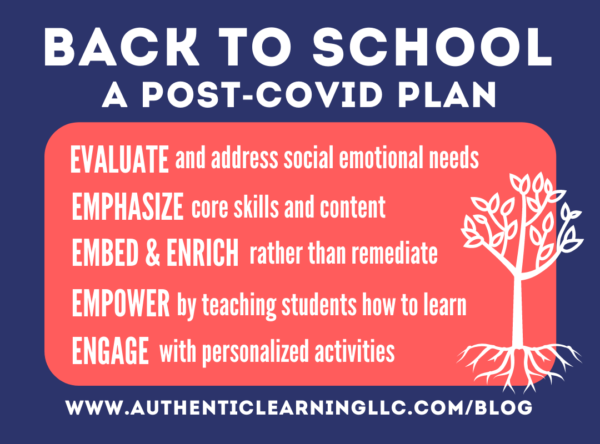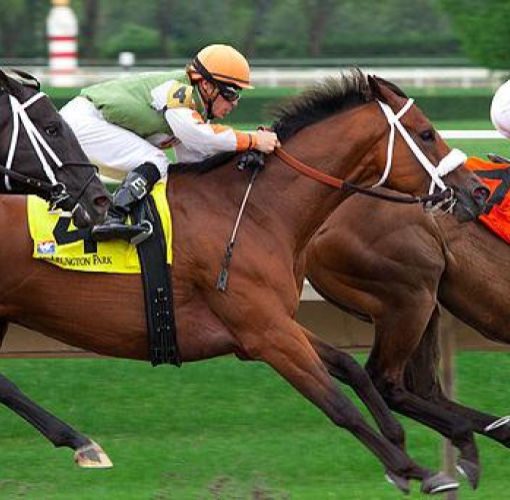Let’s think twice about learning loss.
Research is trickling in, though most of us don’t need it as our experience supports the same obvious conclusion. Not all students learned well in virtual settings during pandemic school closings. [10/31/22 and 12/13/23 data updates below*]
It’s not been for any single reason. Remote learning has demanded a portfolio of new teaching methods, modes, and technologies. And not all students respond to such instruction the same way, depending on their learning style, home conditions, emotional health, and other factors.
Students fall behind. How have we dealt with it before?
The current experience has been called “COVID slide.” That’s a form of so-called learning loss, in this case due not just to the limitations of virtual learning but the hardship of life during a pandemic.
It can also happen in a normal school year. Children fall behind peers due to absences, personal crises, or because they just aren’t connecting to material, methods, or the class in general. For example, even with the use of small group centers in a lesson, there will be students for whom that methodology works well and others for whom it doesn’t.
Special education and basic skills teachers regularly operate under the assumption that taking a 10 week summer break without structured learning or enriching opportunities like trips or camps can set students back several months in reading and math skills.
A study by McKinsey & Company** in June 2020 estimated that students could lose one to two years of learning, depending on the quality of remote instruction. And multiple studies show the impact is disportionately larger for students of color. (Of course, there are many other factors that can affect learning during a crisis.)
Without the need for further study, we can proceed knowing our pandemic-year work is unfinished and that students need our help.
Since we don’t socially promote children before they have mastered the curriculum, schools typically address deficits by offering push in or pull out remedial skills during the day, after school, and/or in summer programs.
Alternatives to remediation
We already know that pull out basic skills classes have issues as students are separated from both peers and the regular curriculum. In-class support is usually part time and can be a distraction. After-school classes are expensive and voluntary. Summer is months away.
All such programs can seem like punishments to children who already feel the stigma of having fallen behind. Instead of remediation, let’s think enrichment and acceleration, starting with these five actions.

1. EVALUATE Define and understand the problem, beginning with SEL, then plan your attack. No assessments are needed to acknowledge that children’s social and emotional needs took a big hit during the pandemic. Barraging students with evaluative tests is no way to get them feeling good about school and getting back on track. Focus on regaining (or gaining) student buy in, trust, and commitment. Repairing and expanding on relationships must come first.
Beyond social-emotional needs, we have plenty of academic data from virtual instruction showing that most students have fallen behind. Differentiate more than ever. Decide what existing or additional resources and training are relevant. Get feedback from parents and keep a dialogue open. And build on what you learned about your curriculum and methodology during remote operations, as the next steps describe.
2. EMPHASIZE: Focus on what’s most important and trim the rest. If there’s one thing we learned during remote learning, it’s that less can be more. It’s the quality not the quantity of time spent on tasks that matters. Prioritize valuable teaching time by targeting where you know students have fallen behind, as well as on prerequisites, core standards, and future readiness skills like critical thinking.
Soul search what activities might not advance learning as well as we need them to. Break content into smaller chunks and keep spiralling instruction until students show mastery. Align schedules, curricula, and delivery methods from teacher to teacher and level to level so you’re all working together (ex. create shared and standardized lesson modules).
Students see remedial work and programs as stigmatizing and demotivating.
And rightfully so. The next three steps offer a different perspective to getting back on track.
3. EMPOWER: Help students learn to learn so they can get themselves back on track. Making up for lost time may not be the right way to look at learning loss. Maximizing the use of time moving forward is a better idea. One way is to ensure that learning continues even when the teacher is not directly leading a lesson.
This capacity involves executive function skills, which include traits like self regulation and resilience. Help students experience success by scaffolding and carving out as much time as possible for individual and small group instruction. Gradually implementing active learning strategies helps students “learn how to learn” and explore how they think about problems (aka metacognition).
“When children have opportunities to develop executive function and self-regulation skills, individuals and society experience lifelong benefits.”
–Harvard University Center on the Developing Child
Work can, and should, still be challenging– maybe even more so. Strong foundations take time to build. Include self paced resources like videos and design lessons with “support on demand” (ex. Resource links, your email, group chats). And it may go against our natural inclination to identify what’s wrong, but focus at least as much on strengths as deficits.
4. EMBED TO ENRICH: Activate and accelerate rather than wait and remediate. Once you’ve made headway with the above, add enriching activities layered on top of your existing and now streamlined curriculum, like open ended performance tasks and problem based challenges. (Example: look at how restaurants have fared during the pandemic to develop a plan for their recovery). And students can continue to reinforce skills with home learning activities and flipped instruction made familiar during school closings.
5. ENGAGE: If there’s a time to shift to more high interest, personalized activities, this is it. Real engagement is making sure each student makes a personal connection with content, is both challenged and supported, and gains beneficial skills and knowledge that transfer beyond the lesson.
Connect students with topics they are passionate about. Design activities that provide multiple entry and exit points, using, for example, choice boards with options for both learning methods and student output. Can you picture the bright faces of kindergarteners eager to learn? As a former high school teacher, middle school AP, elementary principal, and district administrator, I know that’s possible at every level when students care about the work!
One other “E” runs through the five elements above, and that’s Equity. Nationwide, already marginalized students engaged even less. Learning losses are predicted to be greater for low income students. And standardized tests have always been a poor predictor of outcomes, or worse, bad data for academic placements, for these students.
We proceed with the understanding that these students will likely need more to be empowered, enriched, and engaged, and commit to providing whatever is necessary and possible for them. We continue to understand more about our students, our profession, and what learning requires. When we keep sharing and applying that knowledge, together we can turn losses into gains!
⚙ Dr. Marc
**APRIL 2021 UPDATE: Studies quantifying COVID learning loss have come under challenge. Ex. See Forbes, 4/7/21. Additionally, schools are being encouraged through new emergency federal funding to take a remedial/learning loss perspective. Those funds could be better used as described in this essay!
*OCT 2022 UPDATE: Most recent data indicate remote learning has not been the cause of learning setbacks during the pandemic. https://www.chalkbeat.org/2022/10/28/23429271/learning-loss-remote-learning-high-poverty-schools-harvard-stanford-research
*DEC 2023 OECD data shows U.S. outperformed other countries tenfold during and after the pandemic https://www.nytimes.com/2023/12/13/opinion/learning-loss-test-results-covid.html
Learning isn’t all we’ve lost during these tough times. Relationships, rhythms, and our emotional reserves have also been casualties, but recovery is within view! I appreciate your feedback and ideas.
If you have a friend or colleague who speaks this kind of language, or would benefit from hearing it, share this post and invite them to join the conversation.
©2020 Marc Natanagara, Ed.D. All rights reserved. Reprinted with permission.
This article and other resources available at authenticlearningllc.com
When duplicating this post in any form, please make sure to include the attribution above.
January 2021





